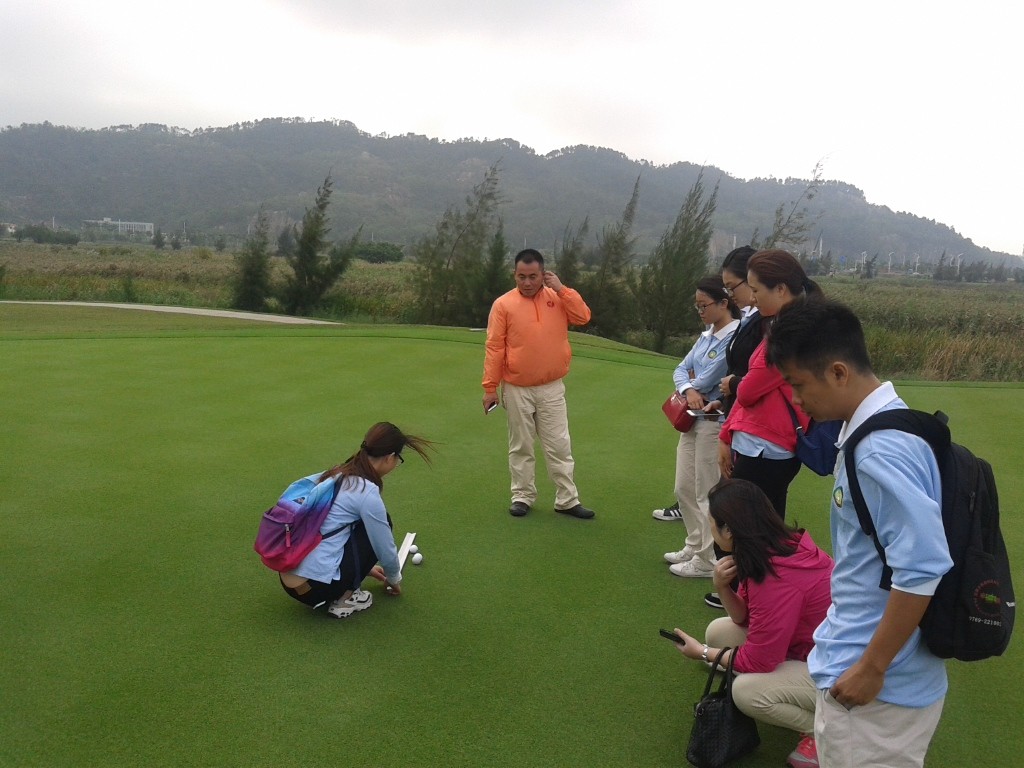Smoothness and trueness are two widely acknowledged qualities of golf greens, but I don’t hear the terms used so much by bowlers or bowling greenkeepers, but from the work I’ve been doing, I believe that it’s time that changed and that bowling green smoothness and trueness should become the focus of all bowls green greenkeepers. I’ve been continuing research on these ideas with some of my students in Zhuhai, Southern China this week.
Smoothness
On golf greens, smoothness is the measure of how much vertical deviation the golf ball is subjected to as it travels across the green. Bumpiness would be a good way to describe this. However, due to the relatively heavy weight of a bowls wood, it seems that this factor is often overlooked as it doesn’t appear so dramatic under the heavier weight, whereas it can have quite a dramatic effect on a golf ball. I’d argue that there is still a significant effect on the wood though and I think it would be beneficial to bowls clubs to make the appraisal of this performance measure using, wait for it, a golf ball. Why? Well, so that we can detect smaller imperfections than would register on a heavy wood.
Trueness
Again in golf, there is a measure of green performance called trueness, which detects the golf ball’s horizontal deviation from the desired line or snaking; side to side movement. Although this is often picked up by bowlers as a bad rink, bump or hollow, the cause of the effect is often mis-diagnosed. For this reason, I also think the golf ball is the perfect object to use to measure this phenomenon accurately.
Accurate Measurement of Smoothness and Trueness.
There are now a couple of machines available to measure this effect in fine turf. One is the patented Trueness meter, which is used by STRI, developed by them in conjunction with Sheffield Hallam University with funding from the R&A and is retained for their exclusive use in their consulting work; and in any case a highly expensive machine.
The second is the Parry Meter developed in Wales and utilising an iPhone app to record the data. Although this machine is commercially available, it is still a bit pricey at around £1000.
In the Tyre Lever and the Golf Ball, I will detail a series of simple, easy tests that can be carried out on any bowling green to improve the surface performance in terms of speed, trueness, smoothness and reliability (consistency) and then show ways that this information can be used to inform the maintenance regime in order to move the green to previously unachievable performance levels.
This new eBook will be available on the site here on 28th November 2015 and complements Performance Bowling Greens.

